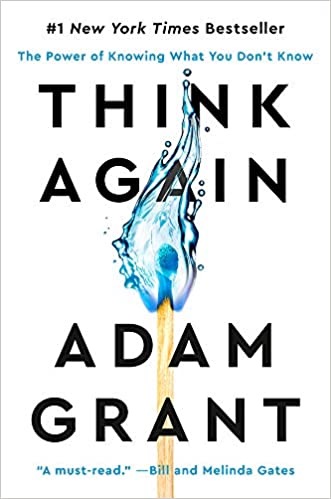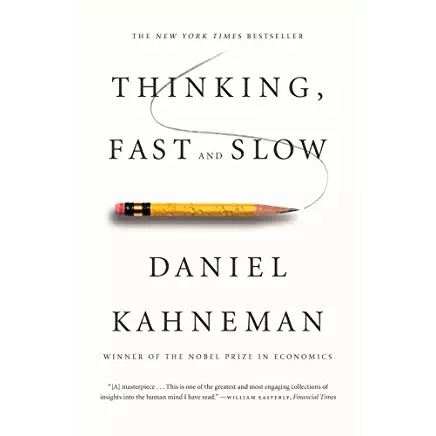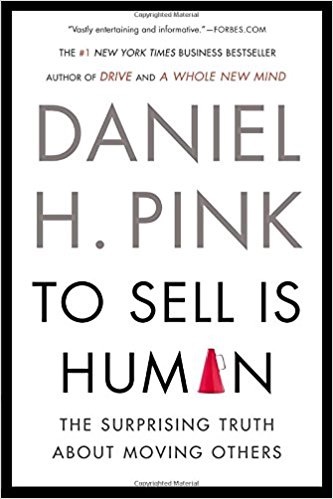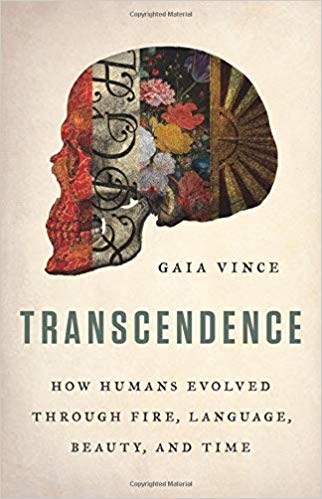Archive for the ‘Book Summaries’ Category
Tuesday, January 2nd, 2018
The Testing Charade: Pretending to Make Schools Better by Daniel Koretz covers the unintended negative consequences of the test-based school and teacher accountability system forced on schools by federal legislation. In addition to outright cheating, he also points out how test prep leads to bad teaching and how non tested subjects are given short shrift. As policymakers remain in denial about the failure of this system, it is works like this that give us hope.
1. Beyond All Reason
- Pressure to raise scores on achievement tests dominates American education today. In this book Daniel Koretz shows how it has lead to cheating, cutting corners with test prep that features bad instruction, and failure. Teacher evaluation is a mess with some teachers being judged by scores from students they didn’t teach. Test prep has lead to score inflation that is not echoed on NEAP tests. NCLB was a train wreck waiting to happen and it’s replacement, ESSA, is only a small step in the right direction. This book should help us all redouble our efforts to fight a system that has had a large negative impact on our national education system.
2. What Is a Test?
- Achievement tests are like political polls in that they only test a small portion of the domain represented by the course or grade level. Most of the domain remains untested. Tests focus on factual knowledge as it is easy to test. Some things like critical thinking and problem-solving can be assessed, but not by standardized tests. Sampling content to be tested has three consequences. First is the error or uncertainty of the resulting scores. This can result in scores varying wildly from year to year for a given teacher. Second is that the sample skills tested are not fully representative of the entire domain.
- The final and biggest consequence is that even the test makers warn that test scores should only supplement all of the other assessments teachers use. Unfortunately, such warnings are ignored by policymakers or never heard in the first place. This leads to many teachers only teaching the tested content while depriving students of other useful instruction.
3. The Evolution of Test-Based “Reform”
- In 1983 the National Commission on Excellence in Education published A Nation At Risk, that viewed our education system as containing a rising tide of mediocracy noting short school years, a weak teaching force, and undemanding curricula. This seems to have initiated the push toward state-mandated testing. This shifted the focus away from holding students accountable for scores to using students’ scores to hold educators accountable.
- In the 1990s the pay-and-punish approach became popular where schools were rewarded or punished as a result of test scores. In 2002 NCLB made this system national in scope. Schools were required to make Adequate Yearly Progress for all student groups of significant size. Obama’s administration made things worse by tying test scores to teacher evaluations. Due to gridlock in Washington, NCLB wasn’t updated until 2015 with the Every Student Succeeds Act (ESSA). This gives states more flexibility, which may make things better at least in some states. The focus on test scores will most likely remain.
- The system fails for three reasons. 1) It focuses on a narrow slice of practice and outcomes. 2) It is a very high-pressure system. 3) There is no room for human judgment. Teaching is far too complex a job to evaluate without any judgment, and many things we value in schools aren’t captured by tests. If expectations were too low prior to 1983, it’s clear that today expectations are unrealistic for many of the students the laws were designed to help.
Posted in Book Summaries, Education Books, Leadership Books | Comments Off on The Testing Charade: Pretending to Make Schools Better by Daniel Koretz
Tuesday, October 6th, 2009
This book by Malcolm Gladwell is still a best seller after 260 weeks. This summary explains how connectors, mavens, and salemen impact all phases of our lives and how these concepts can be used by educators. Also included are other interesting stories including how New York City reduced crime in the 1990’s.
Click here to download the summary of this book.
Posted in Education Books | Comments Off on The Tipping Point – Malcolm Gladwell
Sunday, July 8th, 2012
If you haven’t read The World Is Flat: A Brief History of the 21st Century Release 3.0 by Thomas L. Friedman (© 2007, Farrar, Strauss, & Giroux: New York, NY) it is time. If you have read it, it’s time to review the ten forces that have converged to flatten the world as far as business, commerce, and education are concerned. It’s also time to review their impact on our world and Friedman’s prescient advice. It will help you better understand our world and the changes that are still happening as a result of the flatteners. This book is just as valuable as it was when first published in 2005 as Friedman has updated it twice. Look for the book icon as you read to purchase the book from Amazon.
Tags: The World Is Flat, Thomas Friedman
Posted in Book Summaries, Business Books, Education Books, Leadership Books | Comments Off on The World Is Flat Release 3.0 Summary
Wednesday, March 30th, 2011
The World Is Open: How Web Technology Is Revolutionizing Education by Curtis Bonk tells the story of the ten openers that allow the Internet to change the face of education. Bonk builds on the work of Thomas Friedman’s The World Is Flat to explain how anyone can learn anything, anytime, anywhere. He uses abundant stories and examples to make his point. As you read you will want to check out places on the Web he mentions. Any educator, parent, student, or citizen should be familiar with Bonk’s Ten Openers. © 2009, Jossey Bass: San Francisco, CA.
Tags: Curtis Bonk, The World Is Open
Posted in Book Summaries, Education Books, What can Dr. Doug do for you? | Comments Off on The World Is Open – Curtis Bonk
Thursday, July 1st, 2021
Think Again: The Power of Knowing What You Don’t Know by Adam Grant offers advice about rethinking that all of us can use at work and beyond. The key is to think like a scientist. This means you have to actively try to disprove your own ideas as a way of testing their quality. This would make a great text for any leadership course and an outstanding read for anyone seeking self-improvement. Make sure that there is a copy in your professional development library.
Prologue
- This book is about the value of rethinking your assumptions, instincts, and habits while keeping an open mind. It starts with a story about wildfire fighters who when trapped neglected at first to drop their heavy gear as it was part of their identity and dropping it would signal failure. One man started a fire that in effect burned a hole through the fire and saved his life. This required rapid rethinking as this technique wasn’t taught in fire school. Due to the pandemic, we have also seen many leaders being slow to rethink their assumptions. This book is an invitation to let go of knowledge and opinions that are no longer serving you well. A hallmark of wisdom is knowing when to abandon some of your most treasured tools as you seek new solutions to old problems.
Part I. Individual Rethinking – Updating Our Own Views
1. A Preacher, a Prosecutor, a Politician, and a Scientist Walk into Your Mind
- The big idea here is to think like a scientist rather than a preacher, a prosecutor, or a politician. This requires that you revisit your beliefs to see if new evidence has made them obsolete. The worst bias is thinking that you aren’t biased. Be careful to avoid confirmation bias where you only look for facts that support your beliefs and desirability bias where you see what you want to see. Scientists are actively open-minded searching for reasons why they might be wrong. Your IQ may work against you as smart people recognize patterns faster, which can lead to seeing more stereotypes. If you are trying to promote a change, reinforce the things that will stay the same.
2. The Armchair Quarterback and the Imposter: Finding the Sweet Spot of Confidence
- Here we meet two opposing syndromes. The Armchair Quarterback Syndrome happens when confidence is greater than competence. The Imposter Syndrome happens when competence is greater than confidence. Arrogance is ignorance plus conviction. Humility allows you to absorb life’s experiences and convert them into knowledge and wisdom. A mix of confidence and humility gives us enough doubt to reexamine our old knowledge and confidence to pursue new insights. Most effective leaders score high in both confidence and humility.
- Adam believes that there are benefits associated with the Imposter Syndrome. It can motivate you to work harder. It can allow you to work smarter as you question old assumptions. Finally, it can make you a better learner as you realize that you might have something you need to learn. You are more likely to seek other opinions. It can keep you on your toes as you never think you know it all. You maintain doubts as you know you are partially blind and committed to improving your sight. Each answer raises new questions and your quest for knowledge is never finished. Arrogance, however, leaves you blind to your weaknesses.
3. The Joy of Being Wrong: THe Thrill of Not Believing Everything You Think
- Most of us are wrong more often than we like to admit. Rather than being upset when you find that you are wrong about something, it’s better to tell yourself that it means you are now less wrong than before. You can even be joyful if you realize that it means you have learned something. Adam recommends that you allow learning from being wrong to let you detach from your past and to also live so that your opinions are detached from your identity. This will make it easier when a core belief is challenged.
- A study of professional forecasters showed that the most important driver of success was how often they updated their beliefs. The best went through more rethinking cycles. They have the confident humility to doubt their judgment and the curiosity to discover new information and rethink their predictions. You should view your opinions as hunches and know that something isn’t true just because you believe it. Emotions can also get in the way. When you feel strongly about something you are less likely to change your mind when new facts present themselves. This is why so many respected predictors failed to predict Trump’s victory in 2016.
4. The Good Fight Club: The Psychology of Constructive Conflict
- There are two kinds of conflicts. There are relationship conflicts where people essentially don’t like each other, and there are task conflicts where people disagree about how to do something. The former get in the way of success, while the latter usually helps people to work together successfully. Task conflict brings out the diversity of thought. It can help us stay humble, surface doubts, and make us curious about what we might be missing. It can lead us to think again moving us closer to the truth without damaging our relationships. What matters to children is not how little their parents argue, but how respectfully they argue.
- It’s possible to disagree without being disagreeable. Disagreement is key when it comes to task conflict. The trick is not let task conflict turn into relationship conflict. As a leader, you want to promote the idea that disagreement is necessary for growth and success. It’s also key that leaders show they believe and care about the people with who they disagree. This can make disagreement seem like a sign of respect. Try to frame disputes as debates. This signals that you are receptive to considering dissenting opinions and changing your mind. Don’t fall into the trap that some leaders fall into by surrounding yourself with agreeable people. They shield themselves from task conflict by eliminating boat-rockers and listening to boot-lickers.
Posted in Book Summaries, Business Books, Education Books, Leadership Books | Comments Off on Think Again: The Power of Knowing What You Don’t Know by Adam Grant
Monday, June 2nd, 2014
Think Like a Freak by Steven D Levitt & Stephen J. Dubner (©2014, Harpur Collins: New York, NY) offers to retrain your brain. This book follows Freakonomics and Super Reakonomics that were both best sellers. This claims to be the most revolutionary book yet. It features captivating stories and unconventional analysis that should help you think more productively, creatively, and rationally. Click at the bottom of any page to purchase this very cool book.
Levitt and Dubner
- Steven D. Levitt is the William B. Ogden Distinguished Service Professor of Economics at the University of Chicago, where he directs the Becker Center on Chicago Price Theory. He is the 2003 John Bates Clark Medal winner, an award that recognizes the most outstanding economist in America under the age of 40. In 2006, he was named one of Time magazine’s 100 People Who Shape Our World. Levitt received his B.A. from Harvard University in 1989, his Ph.D. from M.I.T. in 1994, and has taught at the University of Chicago since 1997.
- Stephen J. Dubner is an award-winning author, journalist, and TV and radio personality. His solo books include Turbulent Souls and The Boy With Two Belly Buttons. His journalism has been published in The New York Times, The New Yorker, and Time./li>
Posted in Book Summaries, Business Books, Education Books, Leadership Books | Comments Off on Think Like a Freak by Levitt & Dubner
Friday, December 2nd, 2011
Thinking Fast and Slow: How the Brain Works by Noble Prize winner Daniel Kahneman takes us on a groundbreaking tour of the mind and explains the two systems that drive the way we think. The fast system is intuitive and emotional, The slow system is more deliberative and more logical. This highly anticipated book can help you better understand your own thinking and make better decisions.
Daniel Kahneman
- Daniel is the Eugene Higgins Professor of Psychology Emeritus at Princeton University and Professor of Psychology and Public Affairs Emeritus at Princeton’s Woodrow Wilson School of Public and International Affairs. He won the Nobel Prize in Economic Sciences in 2002 for his pioneering work with Amos Tversky (1937-1996) on decision making. The prize was awarded for his seminal work in psychology that challenged the rational model of judgment and decision-making. His ideas have had a profound impact on the fields of economics, medicine. and politics. He remains the only non-economist to win the Nobel in economics.
Introduction
- Daniel’s aim is to improve our ability to identify and understand errors of judgment and choice in others, and eventually ourselves. To do so he provides a richer and more precise language to discuss them. He uses the term System 1 to refer to fast thinking. This includes both variants of intuitive thought, the expert and the heuristic or rule of thumb system nonexperts use. It also includes the entirely automatic mental activities of perception and memory. System 1 turns out to be more influential than one’s experience suggests and is the secret author of many of the choices and judgments we make. System 2 is the slow, more deliberate, and more effortful system. It involves the choice to use it and concentration. System 2 is in charge of self-control. Together the form two characters that inhabit your mind.
Relationship between 1 and 2
- Daniel sites the Invisible Gorilla experiment (Check Dr. Doug’s Book Summaries for a summary of the book by Chabris and Simmons http://bit.ly/supqh7) as an example of how we can be blind to the obvious and blind to our blindness when we miss obvious things while engaged in deep System 2 thinking. System 2 is too slow and inefficient to substitute for System 1. This makes it hard to avoid mistakes but easier to stop the mistakes of others. Errors of intuitive thought are often difficult to prevent and biases are difficult to avoid.
- Both systems are active whenever we are awake. System 1 runs automatically, which means we can’t turn it off, while System 2 is normally in a comfortable low-effort mode. When System 1 runs into difficulty, it calls on System 2. System 2 is also activated when events violate the model of the world System 1 maintains.
When System 1 Has the Upper Hand
- Chapter 2 describes an experiment you can do that shows how your pupils dilate as you engage in demanding System 2 activity.
- In chapter 3 we find that System 1 is more influential on behavior when System 2 is busy. You are more likely to give in to temptation. A few drinks or a sleepless night will also impact self-control. Physical and emotional effort also tilt the control towards System 1. Fatigue and hunger cut into System 2’s effectiveness. (Dr. Doug: Would it help to let students take in sugar during a test?) Studies show that self-control and intelligence are correlated.
Tags: Daniel Kahneman, Thinking Fast and Slow
Posted in Book Summaries, Business Books, Education Books, Leadership Books | Comments Off on Thinking Fast and Slow How Your Brain Thinks
Sunday, January 6th, 2013
To Sell Is Human: The Surprising Truth About Moving Others by Daniel Pink is a fresh look at the art and science of selling, which is something we all do. If you want to better understand others’ perspectives, make your message clearer and more persuasive. Click below to purchase this book. It is purposeful and practical and may change how you see the world as it transforms what you do at work, at school, and at home.
Introduction
- Over the years, people in sales have often been seen as intellectual lightweights and dodgy characters. Even though 9% of us work in direct sales, some view it as the white-collar equivalent of cleaning toilets. The truth is, however, we are all involved in sales. We are all constantly trying to persuade, convince, and influence others. Studies show that collectively we are devoting 40% of our time on the job trying to move others. Even people in education and medical fields (Ed-Med), which are part of the fastest growing industries, engage in sales-like activities every day. As a result, non-sales selling is far more prevalent than selling in a traditional sense. People also consider this one of the most critical components in their professional success.
Entrepreneurship, Elasticity, and Ed-Med
- Entrepreneurs understand that segmenting job functions doesn’t always work. As small businesses proliferate, more people must have an elastic skill set, which includes a sales component. The U.S. even has more than twenty-one million people who are self-employed and therefore, have to sell themselves, and this number is growing. The Internet has knocked down barriers to entry by small operations. For example, the number of Etsy online shops is approaching one million. Kickstarter has helped people raise over $200 million to get projects off the ground, and smartphones can accept credit cards anywhere. Even bigger businesses are getting flattered with fewer people doing more varied things.
Ed-Med
- Jobs in education and medical care have increased from about 15% to 20% in the last twelve years. In the same time manufacturing jobs have gone from 17% to 12%. Ed-Med jobs are both intent on moving people as in changing what they know, think, and do. Teachers must convince students to part with time, attention, and effort as they sell a lesson. The same happens in health care as practitioners promote healthier behaviors. In any case, you have a better chance of moving someone if the proposed movement is in line with their personal goals. Letting kids choose what to write about and telling patients that you need to tap their expertise regarding their own bodies are examples of ways to move people.
From Caveat Emptor to Caveat Venditor
- Thanks to the abundance of information available on the Internet, today’s buyer has virtually as much information as today’s seller. As a result, sellers are no longer likely to live up to the outdated stereotype that includes terms like pushy, slick, and sleazy. In a world of information parity, the seller (vendor) is more likely to be one who has to beware (caveat). In many cases, the buyer knows more than the seller about a product and pricing. The same thing happens in education and medicine where students and patients can do research and know things that teachers and physicians do not. In the past, smart people were less likely to go into sales. Today, intelligence and creativity are essential.
Tags: Daniel Pink, To Sell is Human
Posted in Book Summaries, Business Books, Education Books, Leadership Books | Comments Off on To Sell Is Human: The Surprising Truth About Moving Others by Daniel Pink
Monday, February 10th, 2020
Transcendence: How Humans Evolved Through Fire, Language, Beauty, and Time by Gaia Vince tells the big picture story of human evolution from its beginnings to the present. Unlike most history books that focus on one era, this book has it all. It is based on our best scientific knowledge and focuses on the evolutionary triad of genes, environment, and culture. It provides a perfect framework for anyone who wants to understand where we came from and where we might be heading. It’s like taking a step back from looking at individual trees and seeing the great story of the human forest. I strongly recommend this to scholars and students in and discipline.
Introduction
- Evolution has created a mechanism where a human being can be built from a single cell. We are also formed in a cultural developing bath. We are not like other animals, yet we evolved from the same process. In this book, Gaia set out to understand our exceptional nature and what alchemy created the planet-altering force of nature know as humanity. Enjoy her remarkable evolution story that rests on the relationship between our genes, the environment, and our cultures. The book is organized by the four key agents that have driven our evolution: Fire, Word, Beauty and Time. It is the interweaving of these four threads that created the extraordinary us. She also focuses on the collaboration between disciplines that is responsible for our transcendence.
Genesis
- 1. Conception: Here we have a big picture overview from the big bang to the point where our ancestors left the forests for the savanna. This is a story that all schools should have in the curriculum somewhere.
- 2. Birth: Humans are exceptional because we learn from each other. This makes our culture cumulative. The most complex things chimps do is crack nuts. About 1.8 million years ago Homo Erectus emerged with a much bigger brain than previous humans. Over time variations developed and interbred. Neanderthals were the most common competitors to Homo Sapiens (us). That’s why we still carry Neanderthal genes to this day. Homo Sapiens may have made it as they were a global species. This protected them from climate change and natural disasters like volcanos.
Fire
- 3. Landscaping: Once microorganisms started generating oxygen and forests grew fire could happen. Our muscles use oxygen to ‘burn’ fuel, but they do it slower. Once humans started using fire they became more social, cooperative, and better able to learn from each other. Fire chemically changes food making it easier to digest. Fire also sanitizes food and can serve as a source of warmth and protection at night. Hunting wild animals for food required cooperation and specialization. Older people knew more about hunting while younger people were faster and stronger. The best spear maker was probably not the best spear thrower. When humans figured out how to make fire this allowed them to easily relocate to find larger concentrations of animals for food. As all this played out we evolved an upright posture and grew larger brains. Watch a man making fire here.
- 4. Brain Building: By harnessing fire our brains could grow beyond the limits imposed by biology. Bigger brains also allow for more sociability and cooperation. Bigger brains lead to babies being born much more immature. This required much more care and cooperation as other adults helped with child care. The development of menopause resulted in infertile grandmothers who could help raise children. The only other animals who have menopause are a few whales. Gram for gram the brain uses a lot of energy. It’s only 2% of the body by weight but uses 20% of the energy. Cooking food partially digests food so humans had to spend less time eating and developed a weaker jaw that was better for speaking. Meanwhile, our guts developed a bacteria culture that also helps us digest our food. Unfortunately, today we eat a lot of processed food containing too much sugar, salt, and fat.
- 5. Cultural Levers: As humans formed larger and larger groups the cultures (collective brains) that came with them gave them leverage to innovate and specialize. A huge breakthrough was the invention of pottery, which is what you get when you make something out of clay and expose it to a hot fire over time. With pottery, you can make soup, store food, and transport it. This was a big improvement over skins, baskets, bladders, or boxes.
- As we learned how to make fires hotter we were able to force metals out of their oxidized ores. Copper was first. The discovery of the alloy bronze, a mixture of copper and tin, created a harder metal for making tools, weapons, and nails. Even hotter temperatures allow for the production of iron and the more recent alloy of iron and carbon known as steel.
- Another key practice that became possible as brain size increased was teaching. Changes in the environment also triggered a burst of cultural variation that promoted survival. Complex language evolved along with tools and teaching. Bigger populations also allowed for longer cultural levers.
Posted in Book Summaries, Education Books | Comments Off on Transcendence: How Humans Evolved Through Fire, Language, Beauty, and Time by Gaia Vince
Thursday, September 3rd, 2009
This book by Anthony Muhammad gives administrators advice on how to deal with four types of teachers who he broadly defines as believers, fundamentalists, survivors, and tweeners. This book came to my attention as it was assigned as summer reading for all of the teachers and administrators in the Binghamton City School District (New York) for summer reading.
Click here to download the summary of Transforming School Culture.
Click here to download Dr. Doug’s take on the book..
Posted in Leadership Books | Comments Off on Transforming School Culture: How to Overcome Staff Division – Anthony Muhammed










